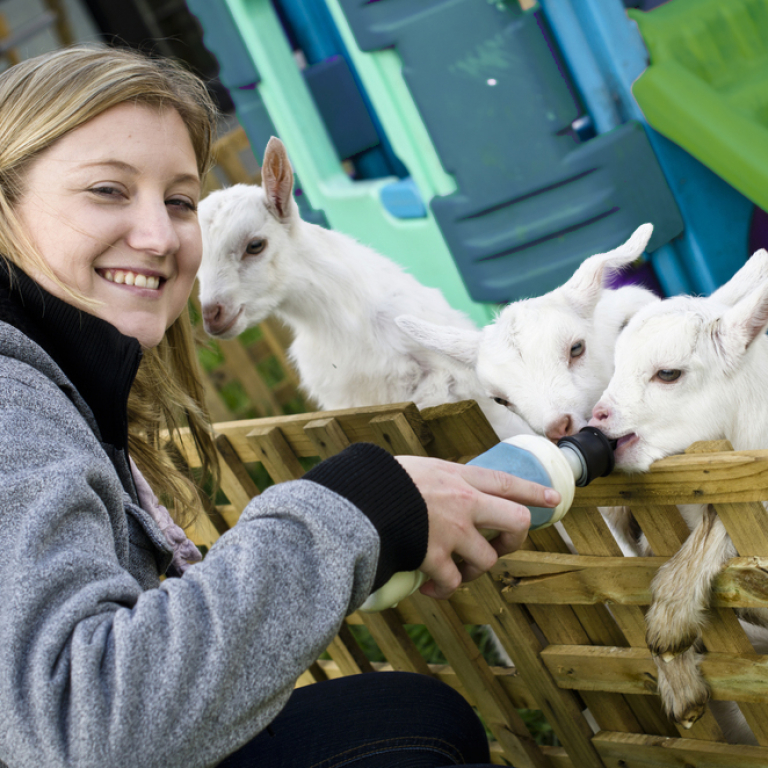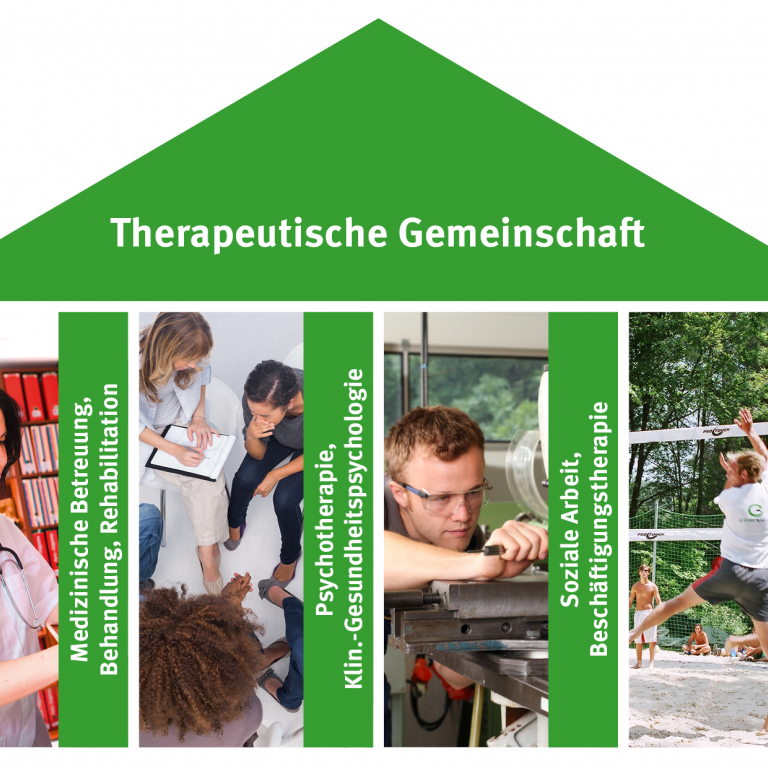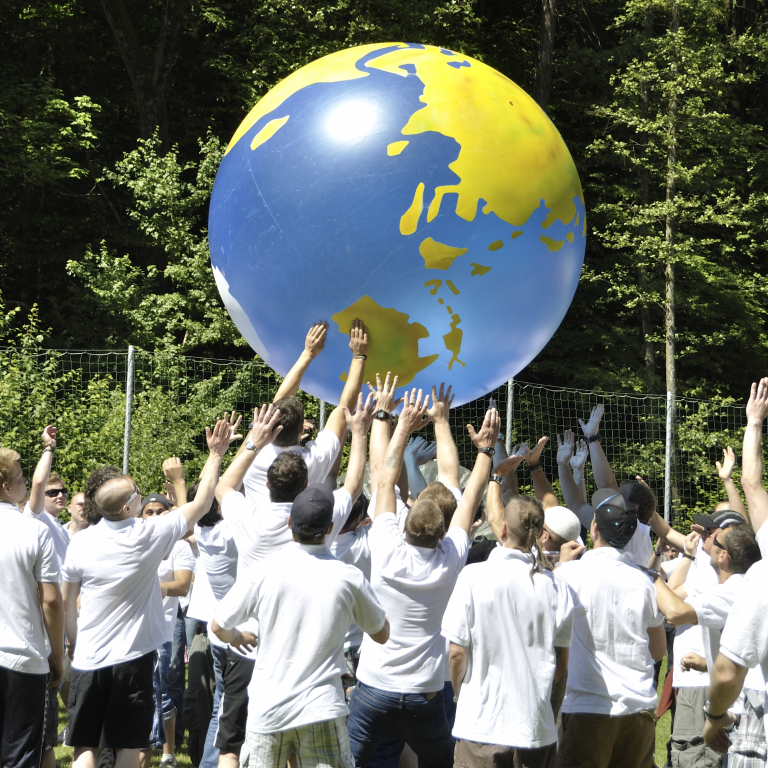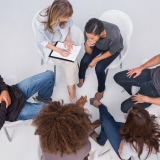Inpatient therapy/rehabilitation
The Therapeutic Community
Basis of inpatient therapy/rehabilitation in the Grüner Kreis
Self-help as a central element
By the therapeutic community we understand not only the cohabitation and cooperation between various counsellors and clients but also the community of responsibility and interests.
The therapeutic community is the basis of inpatient therapy/rehabilitation in the Grüner Kreis, the concept of self-help is a central element of this.
Solo actions and a go-it-alone attitude are often not enough to free people from their SUD and dependency. The bringing together of “self-help communities” and professional assistants shows a way that enables people to resist their SUD . We have developed this path further and are pursuing it consistently.
Taking responsibility
Not only do professional members of staff take responsibility for the therapy/rehabilitation but so do all the clients. Only when everyone assumes responsibility for the therapy/rehabilitation in the therapeutic community and support it in their different ways is there a way out of SUD .
The therapeutic community offers space for clients’ development, but at the same time is also a boundary and support. Learning how to deal with responsibility, for oneself and others, is a specific feature of development.
Daily structure & Therapy phases
Daily structure
The structure of the day is laid down for all clients and members of the therapeutic community. It serves to manage life in the community and orients itself on its needs.
Therapy phases
The individual therapy phases represent the clients’ gradual development steps. They serve for intensive analysis of one’s own problem and promote feedback by other members of the therapeutic community.
- Integration phase (short-/long-term therapy)
- Motivation phase (short-/long-term therapy)
- Implementation phase (short-/long-term therapy)
- Aspirants’ phase (long-term therapy)
- Counsellors’ phase (long-term therapy)
- External orientation phase (short-/long-term therapy)
- Work transition phase in jobs supported by Lower Austria AMS (long-term therapy)
See people as a whole
The bio-psycho-social four-pillar therapy model attempts always to see people as a whole and to support them in all spheres of their life. Here any progress that is made, whether it is in sport, in education, in psychotherapy or in social and physical rehabilitation, is valuable and supportive in the overcoming of deficiencies in every area.
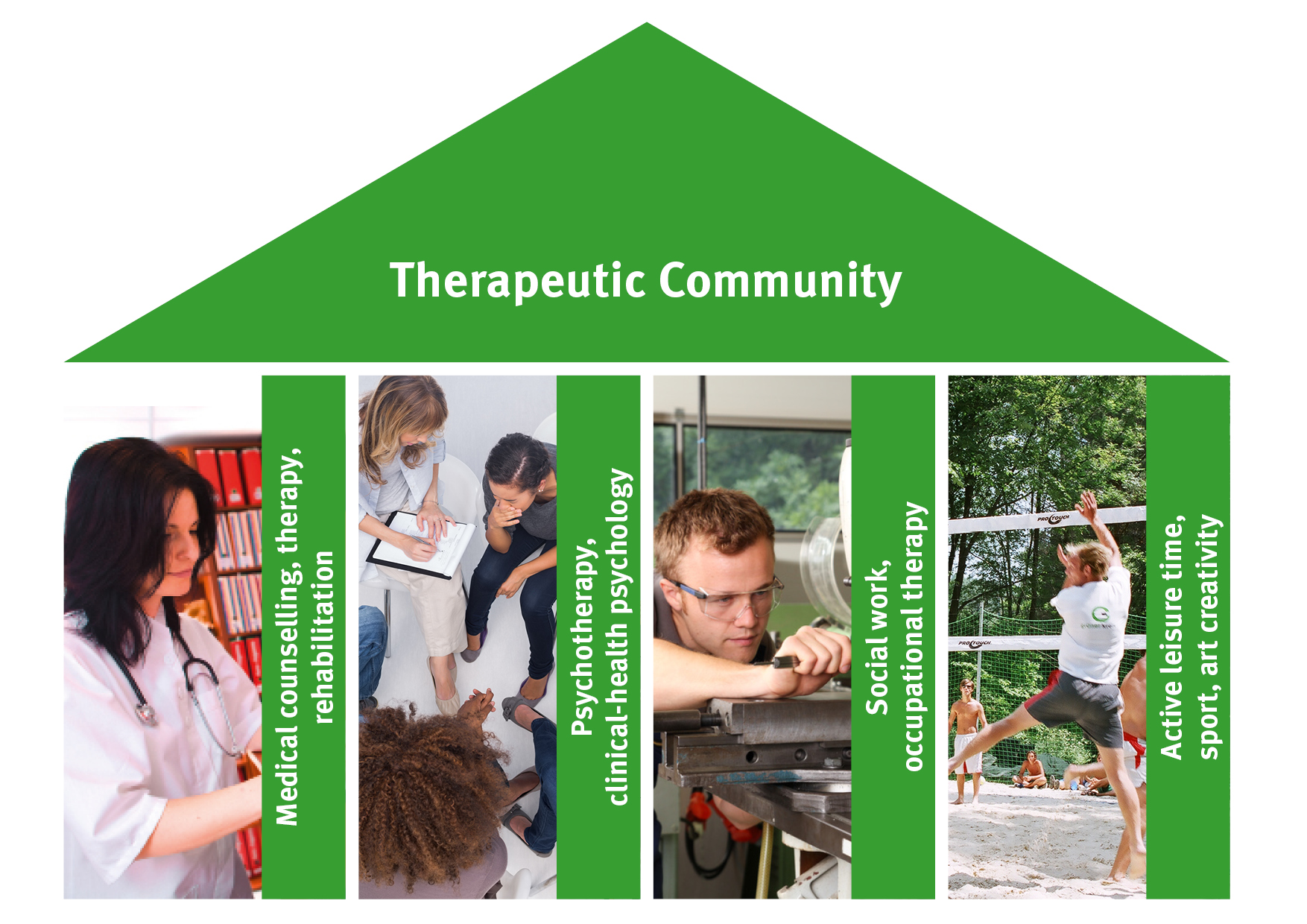
Medical counselling/therapy/rehabilitation
SUD treatment areas (withdrawal and substitution), SUD-related areas (such as infectious diseases), the psychiatric field, as well as general medical care, are covered by our specialist doctors and general practitioners. The cooperation of clients in their own recovery or stabilisation through appropriate treatment behaviour is generally a theme of SUD therapy, as SUD and dependence from the beginning stand in the way of such cooperation. This fundamental problem is countered by the therapeutic community.
Every therapy/rehabilitation, from complete withdrawal to the treatment of infectious diseases, is oriented on the latest scientific findings. Both in the outpatient and the inpatient therapy areas, the doctors seek to respond to the individual requirements of each client. In this way, premature dropping out is to be prevented and a transition to a continuing inpatient or outpatient therapy/rehabilitation is to be ensured.
Psychotherapy, clinical-health psychology
This area describes the possibility for clients to receive professional support in the analysis of their own person and analysis of their experience and actions. Individual and group therapy, self-help groups and, in the inpatient field, life in the therapeutic community cover these pillars. Here the focus is primarily on the development of a relationship between clients, the clinical-health psychologists and psychotherapists. A variety of clinical-health psychology and psychotherapeutic approaches is desirable here and is intended to stimulate the therapeutic community.
Social work, occupational therapy
This pillar covers the field of the necessities of life. Here deficiencies and resources in the fields of working life, education and further education, but also in housing and lifestyle are looked at, remedied or encouraged. For this, social workers, social pedagogues, SUD counsellors and psychotherapists are available to our clients. In the field of education both internal opportunities (education alongside therapy, occupational orientation, interview training) as well as external opportunities (schooling and other courses, placements etc.) are used. Living together and the daily structure are oriented on this pillar.
Active leisure time, sport, art creativity
Vital energy is also needed and acquired outside work. This energy can often be found in culture, art or sport. The daily structure is organised so that the community, primarily in the afternoon, experiences physical exercise, education and culture together.

